Introduction
Orin Ayo work best with in desktop mode with a Logitech Guitar Hero Controller or a LiberLive C1. If you do not have a guitar controller nor a keyboard midi controller, you can still use a wireless numeric keypad or the numeric keypad of your desktop computer. See supported devices below for more details.
Also note that other Gamepad compatible guitar controllers like the CRKD Gibson Les Paul Guitar Controller or the PDP Riff Master have been tested from a desktop computer. On mobile phones, only Bluetooth midi controllers like LiberLive C1 and wireless GamePad compatible devices like the CRKD Gibson Les Paul Guitar Controller have been tested with Orin Ayo.
When Orin Ayo works in standalone mode and not controlling an external arranger device via MIDI and generating all the music internally from WebAudio, you would need a high spec PC or mobile phone like an Intel iCore 7 or Apple M series laptop or a Samsung S25 spec type mobile phone.
If you are using a Bluetooth guitar controller like LiberLive C1, you must first give the web browser (Chrome or Edge) permission to access these devices. See section on Bluetooth below for more details.
Install
Orinayo can be setup and accessed as follows:
- Type https://jus-be.github.io/orinayo/index.html into a Chrome or Edge browser to use it directly from a web page.
- Install it as a progressive web app from the web page. Click on the “install” or “Add to home page” browser links/buttons.
- Install it as a browser extension for Google Chrome and Microsoft Edge from https://chromewebstore.google.com/detail/orinayo/mhnemaeacdgnkmoibfeodelijegakklp
- On Windows 10+ desktops, download orinayo.exe and run it directly from a desktop. It loads the above web page using webview2. See https://github.com/jchv/go-webview2. If you are using Windows 10+, the WebView2 runtime should already be installed. If you don’t have it installed, you can download and install a copy from Microsoft’s website - https://developer.microsoft.com/en-us/microsoft-edge/webview2/
Desktop View
Mobile view
How To Use
To use the application, you select a number of features you need, click on an action and watch the dashboard display. For example, select web audio as your arranger type, select a web audio chord loop, click on play and watch the chords being displayed as you press the buttons of your guitar controller.
To prevent un-desired results, make sure that unused and uneeded features are set to NOT USED. For some features, you might need to refresh the screen with the Refresh action button to enable the selected feature.
The application views are roughly divided into three sections.
- Feature Selections
- Dashboard
- Action Buttons
Feature Selections
1 - The application logo/icon
Clicking on this toggle between mobile view and desktop views as shown above. Mobile view gives you simple straightforward access to live playing of audio loop styles with a guitar controller or a numeric keypad. Desktop view gives you access to evrything else.
2 - Guitar Strum
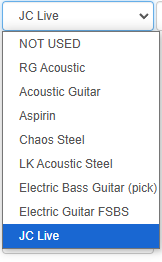
Select what type of guitar to play. There is a selection of strumable acoustic and electric guitars. How the guitar plays arpeggios or strums is determined by the guitar controls. See feature #25 below for details.
3 - Arranger Type

Select what type of music arranger will generate the accompanying live drums, bass and rhythm sounds from the chords being played by the controller device.
Three types of arrangers ara available to select from.
- Midi Style Files
- WebAudio Loops (OGG files)
- External Hardware
Midi Style Files
The accompaniment music will be generated from MIDI style files used by Yamaha, Ketron and Casio. See features #4 and #5 below on how to select and load a style file.
In order to play the GM MIDI notes in the style files, you would need to select a sound font. See feature #7 for more details.
Web Audio Loops
The accompaniment music will be generated from WebAudio loops that have been played and recorded from a range of arranger keyboards that includes Ketron, Yamaha and Roland. See features #15, #16 and #17 below on how to select and load audio loops for drums, bass and chordal instruments.
External Hardware
The accompaniment music will be generated from MIDI messages passed live to an arranger keyboard or arranger module or a looper that can be controlled externally with MIDI. The following hardware devices are supported:
- Ketron Event 76/61 keyboards, Event EVM, Event-X module, SD9 Series keyboard and SD90 module
- Yamaha PSR SX-600
- Yamaha MODX and Montage
- Yamaha QY100
- Korg Micro Arranger
- Giglad (Application)
- Boss RC 600 Loop Station
- Aeros Loop Studio
4 - Arranger Group
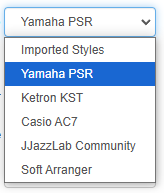
Use this dropdown box list to select what group of style files you want to select from.
5 - Arranger Style
This dropdown box list will contain a list of loaded style files for the current selected arranger group. Select the style you want to use.
To load a new style file use the Load button. See feature #27 for more details.
6 - Input Controller
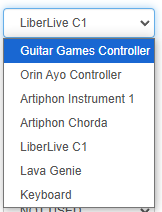
Select what device will be controller of the chords and style variations that will orchestrate the live music generation of OrinAyo.
It recognises chord played from Guitar controllers, MIDI keyboard controllers and other non-keyboard USB MIDI controllers (like Artiphon Instrument 1 or Chorda).
Select Keyboard for remote numpad or MIDI keyboard.
Gamepad Guitar Controllers
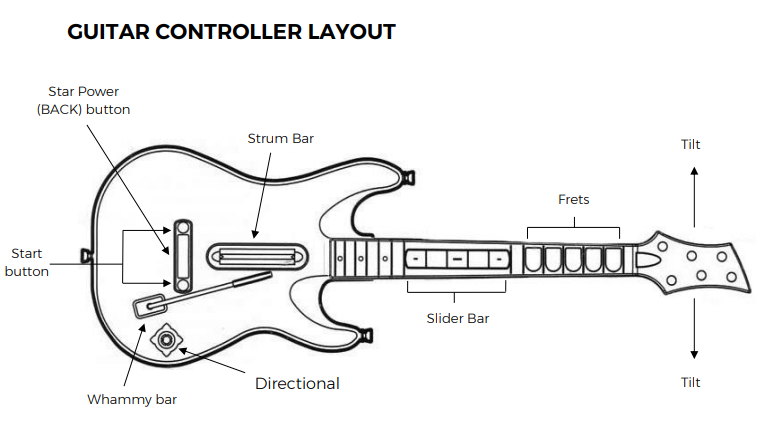
Chords
The five coloured fret buttons generate CHORD midi notes which are send on MIDI channel 4 when the strum bar goes up or down. Twenty chord shapes are supported. There are six basic popular chords (I, IIm, IIIm, IV, V & VIm) playable with a single or two fingers and fourteen other less used chords requiring two, three or even four fingers. The chord mapping in Nashville number format is fixed for now. It will become configurable in a future version.
Basic
| Chord | Green | Red | Yellow | Blue | Orange |
|---|---|---|---|---|---|
| 1 | X | ||||
| 2m | X | ||||
| 3m | X | X | |||
| 4 | X | ||||
| 5 | X | ||||
| 6m | X |
Advanced
| Chord | Green | Red | Yellow | Blue | Orange |
|---|---|---|---|---|---|
| 1sus | X | X | |||
| 1/3 | X | X | |||
| 2 | X | X | |||
| 3b | X | X | X | ||
| 3 | X | X | X | ||
| 4min | X | X | X | X | |
| 4/5 | X | X | X | ||
| 4/6 | X | X | |||
| 5sus | X | X | |||
| 5min | X | X | |||
| 5/7 | X | X | |||
| 5b | X | X | X | ||
| 6 | X | X | X | ||
| 7b | X | X |
Please note that the RC-600 Loop Station and Aeros Loop Studio have only six audio tracks. They can only play the basic six chords. However, when played together with the virtual guitars from Music Labs (RealGuitar, RealLPC, etc) in joystick mode as heard in the demo song above, the virtual guitars can handle the advanced mode chords and fill in the missing gaps. Arrangers do not have this limitation but do not sound as realistic as a looper with the exception of the Ketron Event series which can play audio tracks in their styles.
Start and Stop
The button on the Directional (logo) knob used with the five coloured buttons determines how the arranger style starts and stops.
Pressing the button alone toggles start and stop playing the current selected musical style in the arranger.
Pressing the button as well as a coloured fret button starts the style as follows:
| Button | Starts | Stops |
|---|---|---|
| Green | Intro-2 | End-2 |
| Red | Intro-3 | End-3 |
| Yellow | Intro-1 | End-1 |
| Blue | - | - |
| Orange | Fade In | Fade Out |
Style Variations/Sections (A,B,C,D)
The Star-Power button and the START button are used to control the style variations.
When the Star-Power button is pressed on its own, it will cycles the style variations A–>B–>C–>D–>A. When a coloured fret key is also pressed, then it will play a fill for the current playing variation.
The START button cycles back down from A<–B<–C<–D<–A.
Changing Song Key
Moving the Directonal (logo) knob right or up steps the playing key up ( C -> C#) and moving it left or down steps the playing key down (C -> B).
Please note that this does nothing with a Looper. You have to preload the Looper with the audio files matching the song key. Both the RC 600 Loop Station and Aeros Loop Studio have memories to preload as many songs in all the needed keys for the live event.
Other Playing Features
Pressing down on any of the five sections in the slider bar at the same time the strum bar is moved up or down can be used to perform other features.
This includes sending Foot Switch on/off messages to Ketron Arrangers that can be used to mute arranger parts or perform any custom feature required by the user.
| Button | Strum Up | Strum Down |
|---|---|---|
| Green | Play BREAK | Play FILL |
| Red | Ketron FS-9 | Ketron FS-8 |
| Yellow | Ketron FS-11 | Ketron FS-10 |
| Blue | Ketron FS-13 | Ketron FS-12 |
| Orange | Ketron FS-7 | Ketron FS-6 |
LiberLive C1
Orin Ayo will connect to the LiberLive C1 guitar by the Bluetooth connection used by the LiberLive mobile app. You can’t use both Orin Ayo and the mobile app at the same time.
You can select different drum beats and guitar styles for both paddles and Orin Ayo will use the tempo set by LiberLive except for web-audio styles that have a pre-determined set of tempos per style.
You can also use both the audio from LiberLive C1 and Orin Ayo together in harmony
Chords
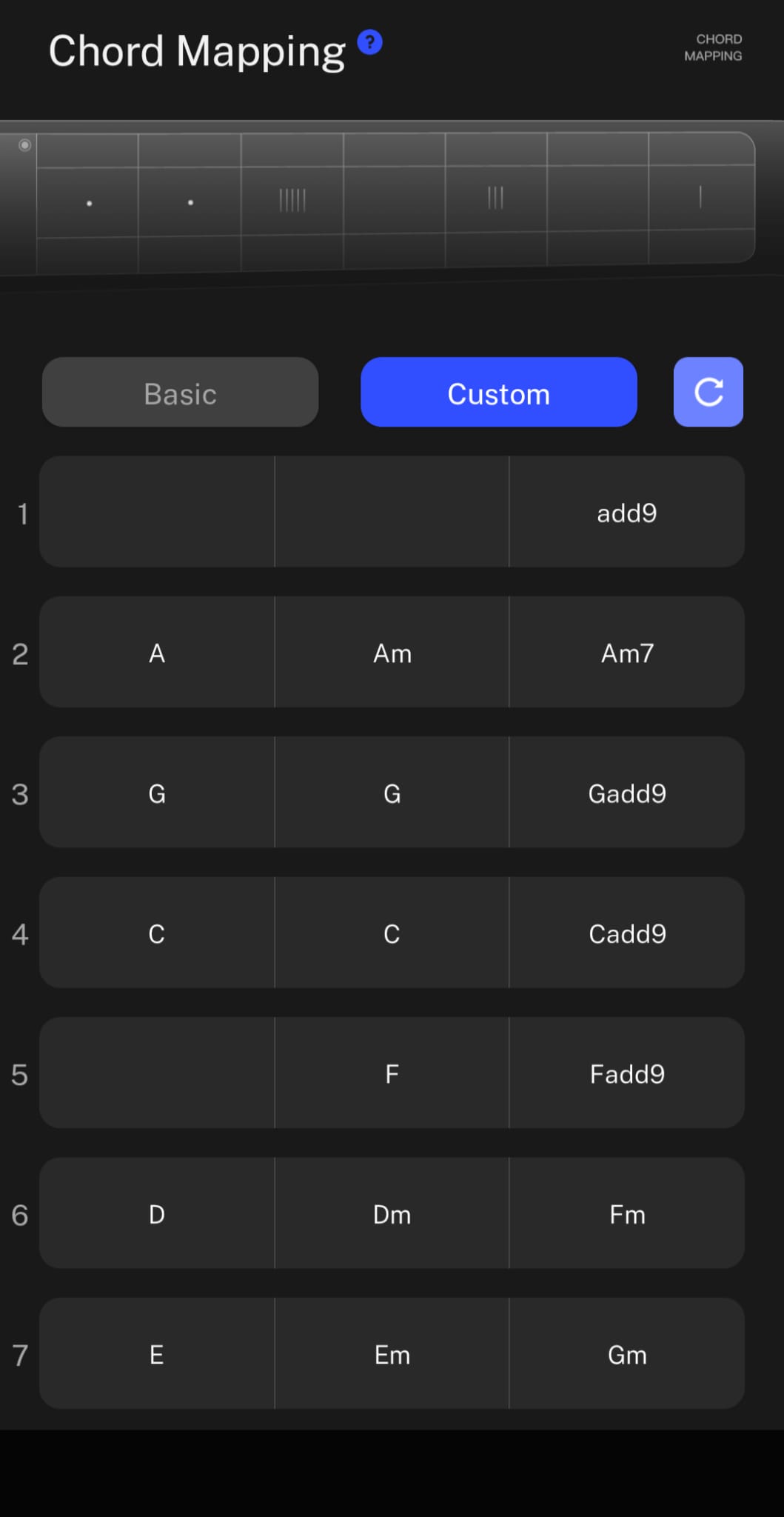 If you select the LiberLive C1 guitar, it uses a modified 7 basic chord keys mapping (7b, 6m, 5, 1, 4, 2m, 3m) different from the standard (1, 2m, 3m, 4, 5, 6m, 7m) by LiberLive and much closer to the 5 buttons of a Gamepad guitar controller. There is also support for additional advanced 14 chord key mappings.
If you select the LiberLive C1 guitar, it uses a modified 7 basic chord keys mapping (7b, 6m, 5, 1, 4, 2m, 3m) different from the standard (1, 2m, 3m, 4, 5, 6m, 7m) by LiberLive and much closer to the 5 buttons of a Gamepad guitar controller. There is also support for additional advanced 14 chord key mappings.
As shown here, the LiberL:ive C1 mobile application may not show them correctly. OrinAyo supports the chromatic scale (12 steps) and converts to and from the diatonic scale (7 steps) used by LiberLive C1 capo. See feature #23 for more details.
Start and Stop
Press both paddles to toggle between starting and stopping the arranger feature. Pressing any of the 21 chord keys before doing so will cause the arranger to play an intro style variation before starting and an end style variation before stopping.
Style Variations/Sections (A,B,C,D)
Press either strum paddle alone to control the style variations.
When the first paddle is moved down on its own, Orin Ayo will cycles the style variations A–>B–>C–>D–>A. When it is moved up, Orin Ayo will cycles back down from A<–B<–C<–D<–A.
When the second paddle is moved down, then it will play a fill for the current playing variation. When it is moved up, then it plays a break for the current playing variation.
Lava Genie
The Lava Genie behaves like the LiberLive C1. However, it can only be used as a MIDI controller. There is currently no support for using the internal sounds with Orin Ayo in harmony like the LiberLive C1.
Chords
It also uses the modified 7 basic chord key mapping and the 21 advanced key mapping from LiberLive C1.
Start and Stop
Press the Lava Genie Logo to start the OrinAyo arranger and use the Lava Genie rhythm stop button to stop the arranger.
Pressing any of the 21 chord keys before doing so will cause the arranger to play an intro style variation before starting and an end style variation before stopping.
Style Variations/Sections (A,B,C,D)
Press the Lava Genie Logo while the music plays to cycles the style variations A–>B–>C–>D–>A.
Artiphon Instrument 1 and Chorda
With Artiphon Instrument 1 and Chorda, only the first five pads are used like a Guitar Hero controller. The strum bridge pads are used to provide control (strum, start/stop, fill, next/previous section).
7 - Sound Font File
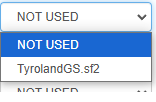
Select a loaded sound font file from the list. If your list is empty or you need a new sound font file, use the Load action button to load a sound font file (sf2) from your computer. See #27 for more details.
8 - MIDI In
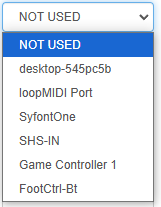
Select an input MIDI device to use with OrinAyo. Only one input device can use at any given time. This excludes the Stream Deck (USB device) that can be used with a MIDI input device. It however includes a MIDI keyboard controller. OrinAyo has only been tested with the Behringer X Touch Mini and the Carry-On Folding Controller 49.
If the Arranger Type is set to keyboard, the MIDI note on and note off messages will play the piano and pads keyboard voices. See feature #24 for more details.
Program Change Messages (PC)
With no music style playing, these messages are used to recall application settings saved as slots (1-128). See the Save action button in feature #27 for more details.
Otherwise, they are used to control the playing style as follows:
| Value | Action |
|---|---|
| 0 | Mute/unmute lead guitar |
| 1 | Mute/unmute drums |
| 2 | Mute/unmute bass |
| 3 | Mute/unmute chords |
| 4 | Mute/unmute guitar chorus effect |
| 5 | Mute/unmute guitar reverb effect |
| 6 | Mute/unmute guitar compression effect |
| 7 | Mute/unmute guitar delay effect |
| 8 | Select style variation A |
| 9 | Select style variation B |
| 10 | Select style variation C |
| 11 | Select style variation D |
Control Change Messages (CC)
These messages are applied anytime
| Value | Action |
|---|---|
| 12 | Keyboard piano volume |
| 13 | Keyboard pads volume |
| 1 | All Audio loops volume |
| 14 | Previous style variation |
| 15 | Start/stop arranger |
| 16 | Next style variation |
9 - MIDI Out

Select a device from this list only if you plan to control an external arranger or looper device by OrinAyo. See External Hardware above for more details.
You will need to pre-configure the device and enable it to receive MIDI chord note messages on channel 4.
10 - MIDI Synth

If you want to use an external MIDI device to play the keyboard pads voice instead of the internal WebAudio sampler voice , then select it from here. The keyboard pads voice is a synth type voice played with the current active chord. By default it is the GM voice 90 called warm pads. For more details. see feature #24 below.
11 - RealGuitar Out

If you want to use any of the soft guitar products from MusicLabs like RealGuitar, RealLPC, RealStrat, etc instead of the internal WebAudio guitar in OrinAyo, then you would need a virtual MIDI device like loopMIDI configured for sending the MIDI messages. Select a device from this pulldown list.
12 - RealGuitar Strum
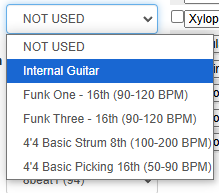
If you want to play a MIDI based guitar strum loop pattern with the internal guitar or with an external guitar like RealGuitar or RealLPC, then use this to select on the patterns provided.
Select Internal Guitar to use the internal WebAudio guitar and use the next and previous style variation controls to cycle through the provided strum patterns.
Toggle start action button to start and stop the strum pattern loop. The strum will play to the currently set tempo. Please note that this feature cannot be used with a music style. Make sure no style is selected when using this to prevent unexpected results.
13 - Audio Device In
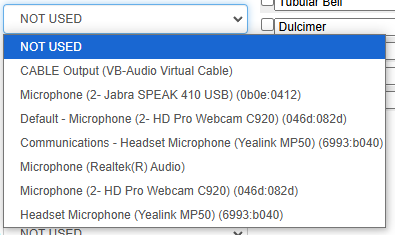
Use this feature to mix the output of an external real instrument with Orin Ayo. The drop-down list will show all the input audio devices on your PC that are accessible to the web browser.
Select the device you want and Orin Ayo will play the audio from this device instead of the default internal guitar sound.
It can be used in the following situations:
- To enable a solo musician to play and mix the sounds from LiberLive C1 guitar with the selected music style in Orin Ayo
- To enable a guitarist to play lead and riff melodies along with another person controlling the selected music style in Orin Ayo
14 - Audio Device Out
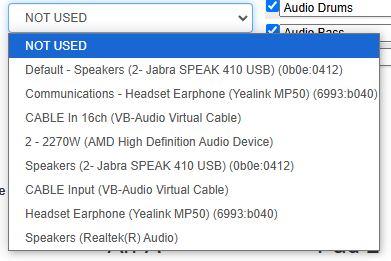
By default, all sounds coming out of Orin Ayo are sent by the web browser to the current selected output device by the underlying O/S. To use a different device, use this feature to select a device from the drop-down list
This feature is very useful if you want to stream or sent the live music directly to an external application like a DAW using a virtual audio device like “Virtual Cable”.
15 - Audio Chord
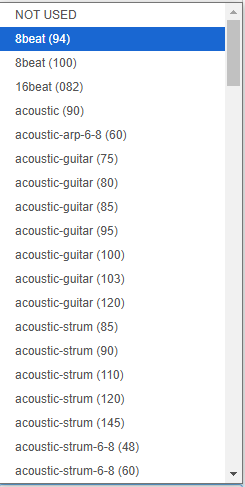
If you select Web Audio Files as your Arranger Type, then you have to select an audio loop here that Orin Ayo will use together with the bass and drums to give the music a style a groove. It could be a rhythmic guitar riff or a keyboard chordal harmony.
Audio loop styles in Orin Ayo have twelve pre-determined tempos and a default tempo. Orin Ayo will use the selection for the chord loop to pre-select corresponding bass and drum loops that have matching names and tempos. You can manually change these selections to your taste.
16 - Audio Drum
Select alternative drum loop to play at the current tempo from this drop-down selection list.
Please note that mixing different tempos can produce undesirable results as Orin Ayo does not stretch audio loops. The selected loop choice will be saved and recalled when the page is re-opened.
17 - Audio Bass
Select alternative bass loops to play at the current tempo from this drop-down selection list.
Please note that mixing different tempos can produce undesirable results as Orin Ayo does not stretch audio loops.
The selected loop choice will be saved and recalled when the page is re-opened.
17a - Audio Riffs
Select a combination of chord and bass loops to be played at song begining or ending with the current tempo from this drop-down selection list.
Melody loops in the current song key will be played at the start and end of the style respectively. Depending on your input controller, you can repeat the into loop at any point by pressing the correct key combination. Also, the melody loop auto-plays if a style variation loops twice and no chord keys are received from the input controller.
Please note that mixing different tempos can produce undesirable results as Orin Ayo does not stretch audio loops.
The selected loop choice will be saved and recalled when the page is re-opened.
18 - Chord Tracker

Select an input MIDI device to use with the Orin Ayo ChordTracker feature. This feature is implemented for the Yamaha Sonogenic SHS-500 Keytar and compatible devices. Orin Ayo well send the chords being played as Yamaha midi SYSEX messages to the selected device. The device is then able to ensure that only notes in the current key and in harmony with the current chord will be played by the device.
19 - Song Player
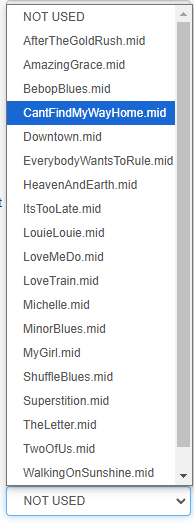
This feature enables OrinAyo to play song midi files that contain chord progressions that are compatible with Yamaha keyboards like the PSR-SX600 with a different style each time. The song lyrics and chord symbols can be viewed live just like karoke with the Lyrics action button.
The user can uses the song like backing tracks and sing or play along live with the song.
Select one of the internal midi files in the list or use the Load action button to load an external compatible midi file which will appear in the list to be selected. Click on the Play action button to start and stop playback of the song.
Dashboard
This part of the application is the application dashboard showing the current status or values associated with the live music being created by Orin Ayo.
20 - Main Display

- Displays the current song key and the current chord being played in that key.
- The arranger style currently selected. Orin Ayo supports an intro, four main ( labelled A-D) and an end variation for each music style.
- Which Pad style (numbered 1-5) is currently playing
- If a RealGuitar strum is in effect, this shows what strum variation is in use
- If OrinAyo is using recalled configuration settings, the slot number for the saved configuration settings is shown here.
21,22 - Guitar Buttons Display

Displays which Guitar Controller buttons currently pressed and consequently what chord will be be display on the main display.
23 - External Guitar Status (LiberLive C1 or Lava Genie)

If you have an external digital guitar that supports Bluetooth like the LiberLive C1 or Lava Genie, this is where the connection status of the device is shown.
With the LiberLive C1, the following additional features are available:
- Select what internal strum styles are to be played on paddle A and B at the current tempo. Please note that this is independent of the styles being played by Orin Ayo. When using this feature ensure that both styles complement each other.
- Select what drum beats to play from paddles A and B.
- Select what key signature (flat or sharp) to be used with the current key. This used to make LiberLive support 12 song keys like Orin Ayo by applying sharps and flats to the chord key mappings.
24 - Instruments Control (Midi and Audio)
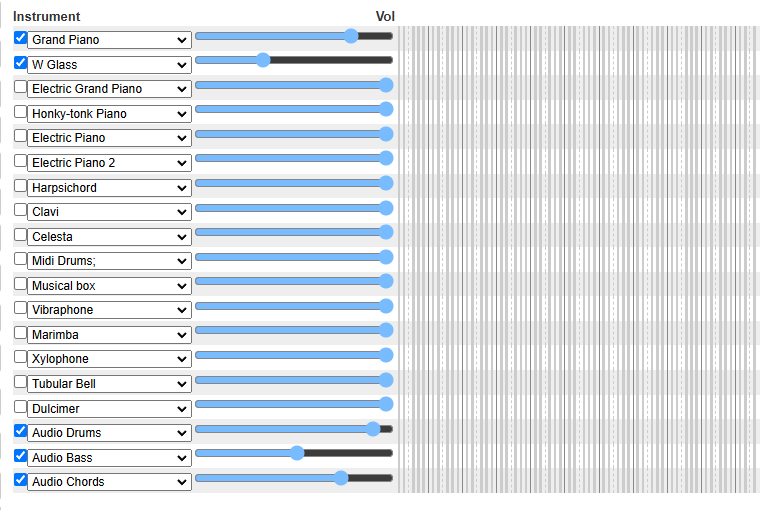
Apart from the main guitar instrument (see Guitar Control below), all other musical instrument are controlled from this part of the user interface.
The first two instruments represent the sampled keyboard instruments played by any connected MIDI keyboard controller. The last three instruments represent the drums, bass and chord loop players and everything else is MIDI channels 3-16.
For each instrument track, the following controls are available:
- A check box to enable or disable the instrument. The instrument can heard or silenced.
- A drop down list to select a specific instrument. For MIDI device instruments in sound fonts (SF2 files), this is a list of General MIDI instruments. For Audio style loops, there is no selection and for web audio sampled instruments used by the MIDI input controller, it is a list of internal instruments supported or external instruments loaded from sound fonts (.keys and .pads files)
- Volume control
- Map of notes being played (MIDI only)
25 - Guitar Control

This is where the internal guitar is controlled. It includes controls for:
The sampled sound to be used.
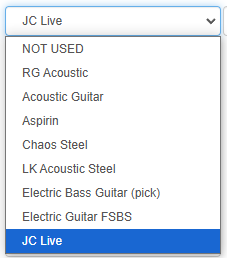
Select one of the sampled guitar instruments to play as. They range from acoustic to electric guitars. The sound is clean without effects applied. To apply effect use the pdedalboard explained below.
Strum Type 1,2 & 3
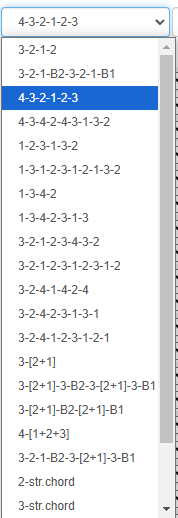
Orin Ayo supports three types of guitar strumming:
- STRUM.
- BASS&STRUM
- PICKING
Strum
Pressing Strum bar Down/Up triggers Down-Strum/Up-Strum of the chord switched by Frets. Pressing Strum bar Down/Up with all Frets released triggers Muted Strums Down/Up of the last played chord.
Bass and Strum
Strum bar Down triggers Bass once on chord change and/or after you release all Fret buttons, and will continue triggering Down-Strums of the same chord until you change the chord or release Fret buttons. Strum bar Up triggers Up-Strums all the time.
Picking
With Picking function Strum bar works differently, according to its name. Strum bar Down triggers Bass of the current chord all the time. Strum bar Ups sequentially trigger individual strings (chord voices) in the order specified by selected String Sequence. Click on drop-down list shown on the left to select String Sequence in the popup list
Strum Voicing

Select what type of voicing should be used to play sampled guitar sound. Three ranges are supported
- Low voicing is MIDI note C2 and below
- High voicing is MIDI note C6 and above
- Medium voicing is between MIDI notes C4 and C6
Impulse Response File
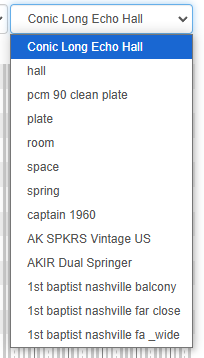 An impulse response, in terms of its application to guitar, is a sonic snapshot measuring the exact sound of a complete amplifier setup. That includes the speaker cabinet, microphone, microphone placement, room, and peripheral equipment.
Select any of the IR wav files provided to use.
An impulse response, in terms of its application to guitar, is a sonic snapshot measuring the exact sound of a complete amplifier setup. That includes the speaker cabinet, microphone, microphone placement, room, and peripheral equipment.
Select any of the IR wav files provided to use.
26 Style Control

These controls are used to control style playback. They include:
- Tempo determines the playback speed. When a MIDI style file is being played, the tempo can be adjusted freely between 40bpm and 140bpm. When an WebAudio style loop is being played, tempo can only be adjusted five steps lower and five steps higher.
- Auto Fill determines if fills will be played automatically when you switch stype variations A to D.
- Into/Outro determines if a intro Outro variation will be played when style starts and ends.
- Sync Start determines if the style will start automatically when the first chord is played.
- Pedals enables or disable the use of the pedalboard to apply effects to the sampled guitar.
- Mute Chords is used in song mode (see actions below) to ignore the recorded chord progression and use what is played live instead
- Vocalist mode is also used in song mode to display lyrics only in the Lyrics window.
- Volume is the control for the internal guitar volume.
Action Buttons

27 Application Actions
These are all the buttons to making Orin Ayo perform a specific action depending on what features have been set and what controls are enabled or disabled. They include
- Play
- Normal/DJ
- Color Tabs
- Load
- Stream Deck
- Pedalboard
- ChordPro
- Lyrics
- Save
- Record
- Refresh
- Settings
- Help
Play
This action button starts a song or style depending on what features have been enabled. If a style is enabled, the style will start and use the chords from the input controller. If a song is enabled, then the chord progression from the song will be used instead unless song chords are muted.
While a song or style is being loaded, the button background color will change to red displaying the label “Waiting”.
When the song and/or style is loaded and ready to be played, the background color will change to green and the label will change to “Play”.
If the user now clicks the button to start playing, the background color changes again to red and the label will change to “Stop”.
Clicking the button one last time will stop the song and/or style and change the background back to green and the label back to “Play”.
Normal/DJ
This action button is only useful when Orin Ayo in remotely controlling an external Yamaha keyboard with style control like PSR SX-600 and higher. It toggles between sending both chords and style section control midi events (Normal) and sending only style section control midi events (DJ).
Color Tabs
This action button is only useful when Orin Ayo is remotely controlling the Music Labs RealGuitar software. It toggles between the “Color Tabs”, “Smart Strum” and “Smart String” modes. For more details, see Music Labs documentation for RealGuitar.
Load
This button will load an external file into the web browser database that extends Orin Ayo features. When loaded successfully, they will extend the appropriate drop-down list and will be stored in the Web Browser IndexedDB database.
The following file types are supported.
- Orin Ayo audio style loops (.drum, .chord, .bass, .riff)
- Ketron style file (.kst)
- Yamaha style file (.sty, .prs, bcs)
- Casio style files (.ac7)
- Soft Arranger style files (.sas)
- Sound Font files to play General Midi styles (.sf2)
- Sound Font files to play piano keyboard instrument (.keys)
- Sound Font files to play pads keyboard instrument (.pads)
- Song Files with chord progressions (.mid)
- Chord Pro chord sheets (.cho)
Orin Ayo audio style loops
These are OGG audio files with audio slices formatted as required by Orin Ayo. The meta data for locating the slices is stored in the file name.
The following naming convention is being used:
- Chord loops are formatted as (label)_(tempo)_(maj-min-size)_(sus-size)_(variation-count). For example, acoustic-guitar_103_4660.chord or acoustic-guitar_120_4000_4000_2.chord
- Bass loops are formatted as (label)_(tempo)_(maj-min-size)_(variation-count). For example, funky-beat_95_10105.bass or funky-groove_108_8889_4.bass
- Drum loops are formatted as (label)_(tempo)_(intro-size)_(variation-size)_(fill-size)_(break-size)_(end-size). For example, pop-tropical_96_2500_10000_2500_2500_5000.drum
- Riff loops are formatted as (label)_(tempo)_(maj-min-size). For example, funky-groove_108_8889.riff
(label) is the required name of the audio style loop.
(tempo) is required and indicates what tempo to play the loop.
(maj-min-size) is required and specifies the size of each of the twelve slices for major chord keys and the twelve slices for minor chord keys. Needed for chords, bass and riff audio loops.
(sus-size) is optional, but is required if (variation-count) is specified. It specifies the size of each audio slice for the twelve suspended chord keys.
(variation-count) is optional and specifies how many variation slice block are in the loop.
(intro-size) is required. It is the size of the intro drum slice.
(variation-size) is required. It is the size of each of the four drum variation audio slices.
(fill-size) is required. It is the size of each of the four drum fills.
(break-size) is required. It is the size of the drum break audio slice.
(end-size) is required. It is the size of the ending audio drum slice.
MIDI style files from other arrangers (Ketron, Yamaha, Casio and Soft Arranger)
These are MIDI or other binary files containing style data supported by Orin Ayo. The style name will added to the list of styles when the style file is loaded successfully.
Sound Font files
Orin Ayo uses sampler data stored in sound fonts (SF2) files for supporting a MIDI keyboard controller and playing GM MIDI style file.
The voice names will be added to the respective drop-down lists.
Song Files with chord progression
Orin Ayo can load external MIDI files with chord progression data that can be played on any compatible Yamaha keyboard like the PSR-SX600 with a different style each time.
Chord Pro chord sheets
Orin Ayo supports the extended Chord-Pro format proposed by Paul J. Drongowski.
It provides an editor that can edit a song and add extra directives for precise timing, section changes, tempo, etc. The editor can generate a compatible midi file.
Stream Deck
Orin Ayo supports the Stream Deck USB device. The touch buttons, encoder dials and LCD screen can be used to control live play.
This action button is used to pair/unpair a Stream Deck device.
Please note that this button has no effect when the Orin Ayo is application is started from a browser extension. Use the Settings action button below to open it as a web page. Click on About|Orin Ayo to do so and then try again.
Pedalboard
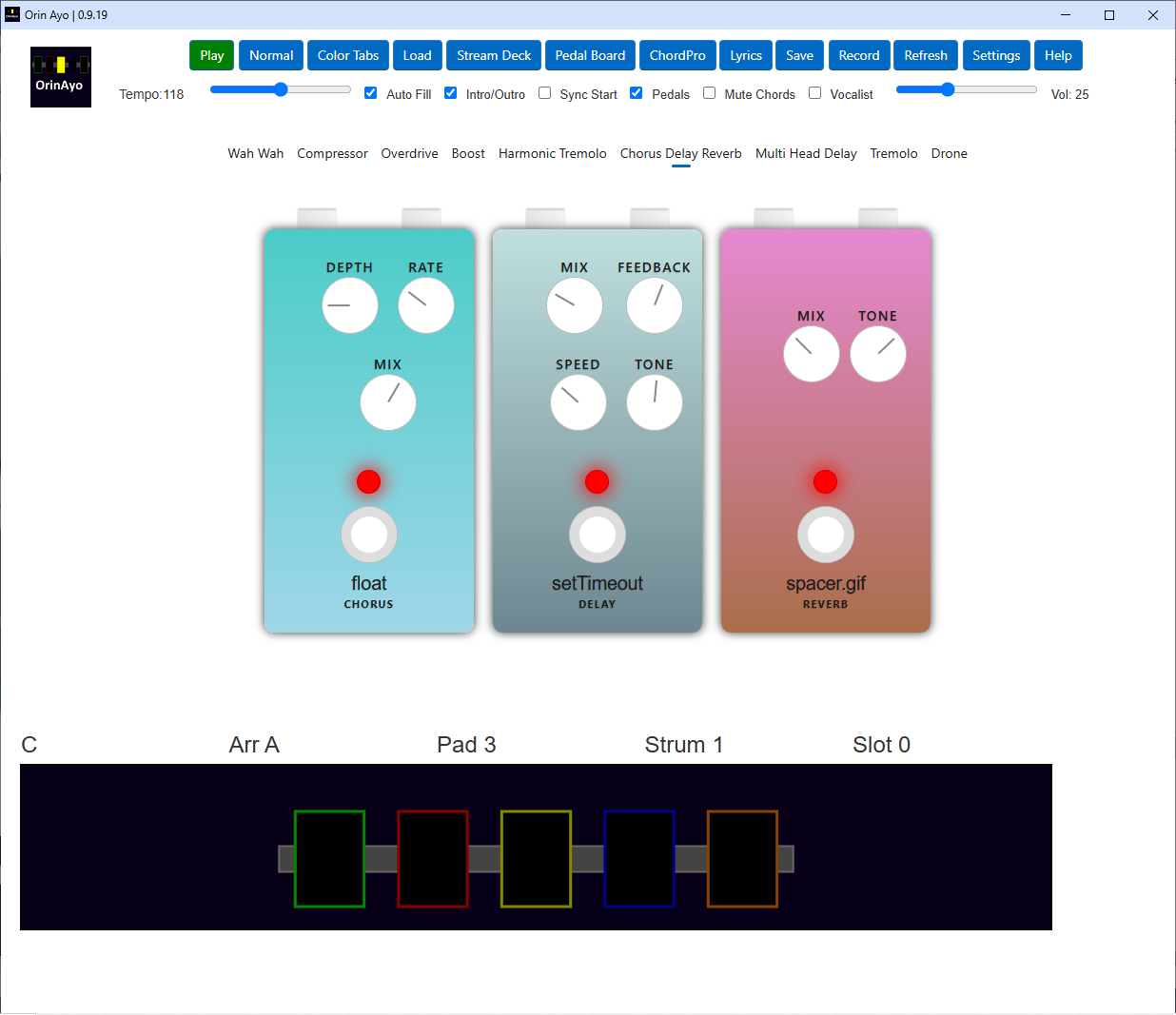
Orin Ayo has a built-in pedal-board with various guitar effects that can be used with the internal guitar or an external guitar plugged into PC.
This action button toggles between showing the features/instruments view and the pedalboard view.
Chord-Pro
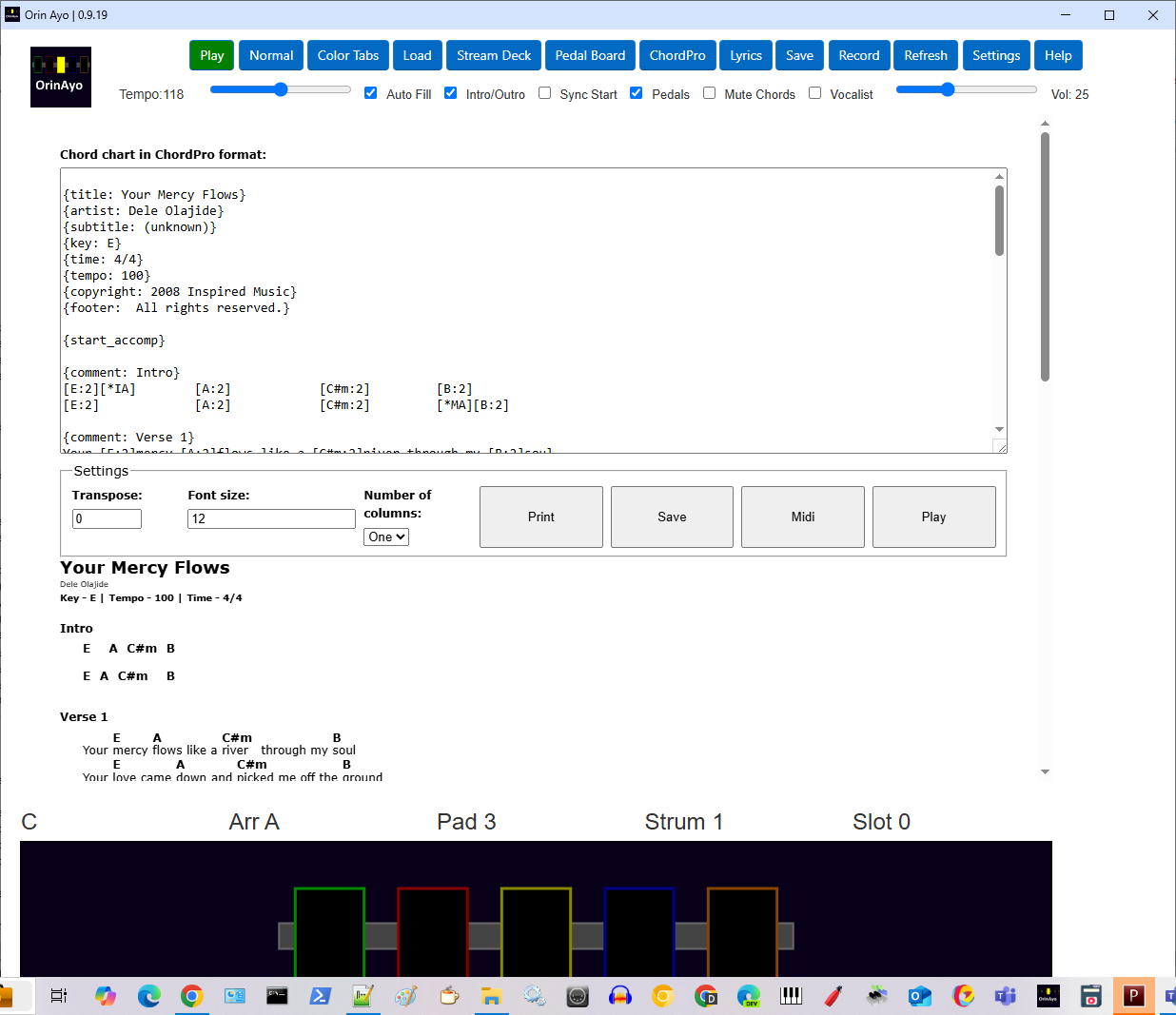
This action button toggles between showing the features/instruments view and the chord pro editor view.
Lyrics
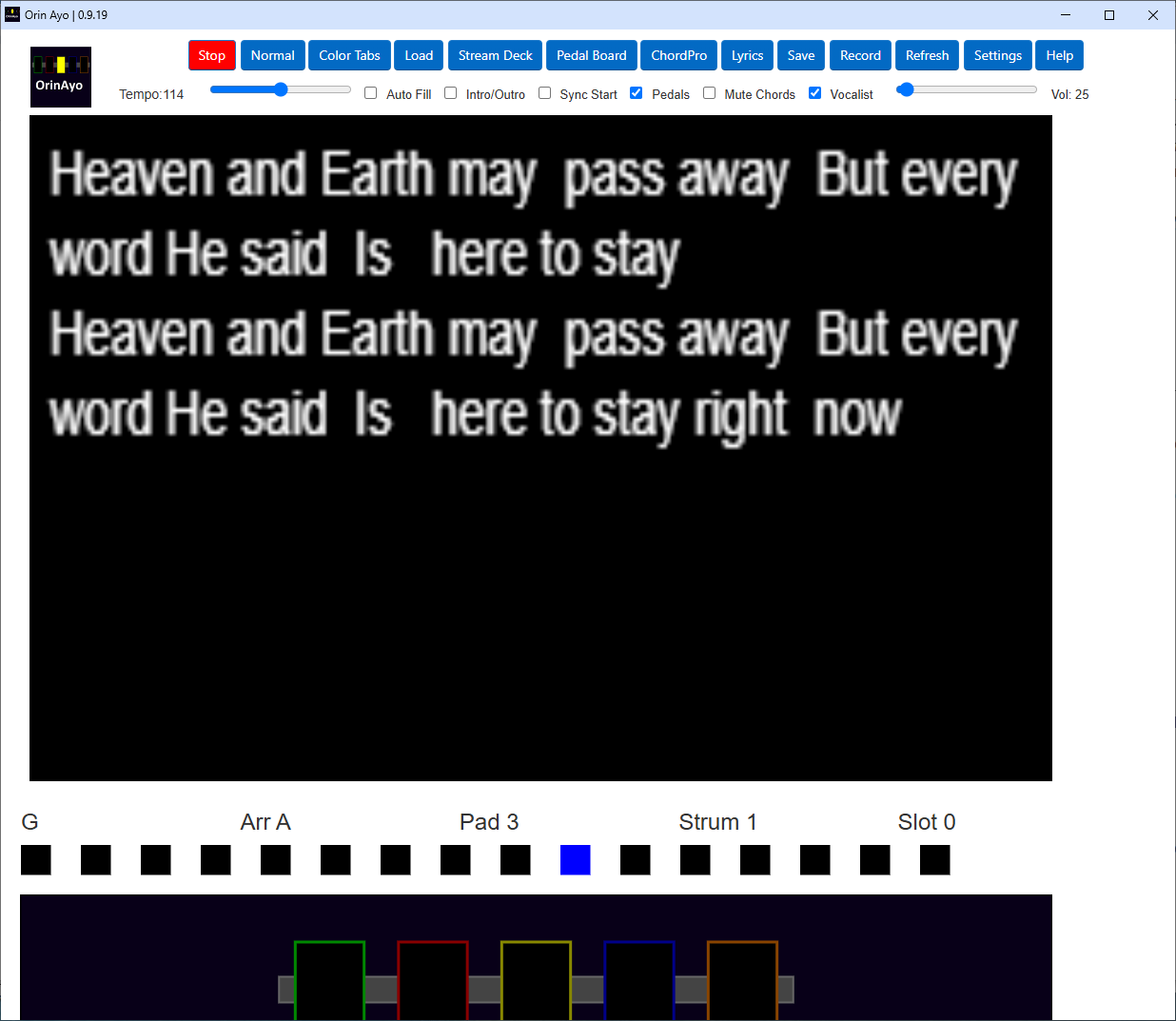
Orin Ayo has a lyrics display that is used to show the lyrics and the chord progression of a song file.
This action button toggles between showing the features/instruments view and the displayed lyrics.
Save
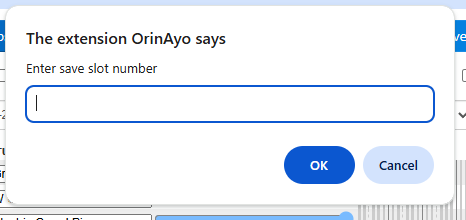
Orin Ayo can save most of the selected features and dashboard settings in a registration slot. Up to 128 slots can be used.
These saved settings can recalled from a slot from the input controller device, external midi controller or a Stream Deck.
This action button is used to save the current settings to a specific slot number.
Record
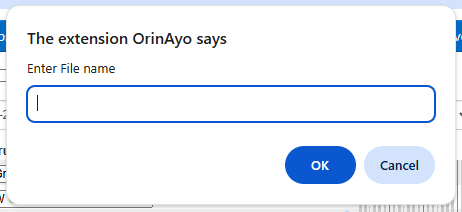
Orin Ayo can record the current live style performance as an audio file (OGG). It can also record the playback of a song with the lyrics and chord progression as a video file (MP4)
This action button is used to prompt for a file name for the audio or video file that will be created when the music is started.
Refresh
Use this action button to refresh the screen or reset the application. It should also be used after external files are loaded with the load button.
Settings
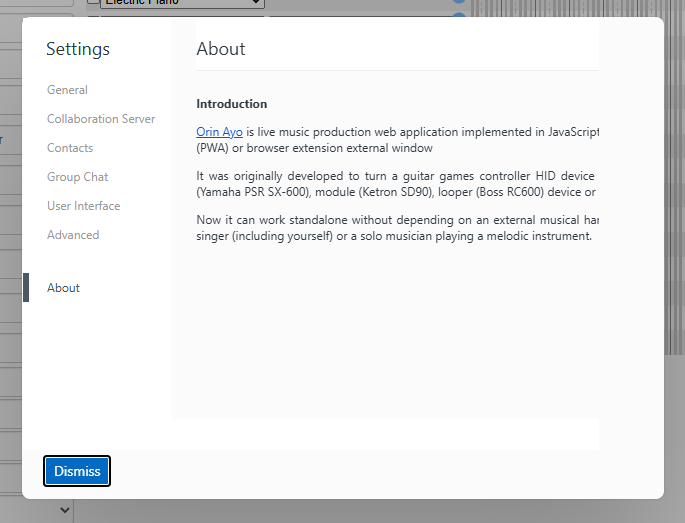
The behaviour of Orin Ayo can be modified from the settings dialog screen. Use this button to open the screen.
Help
Displays this information
External Accessory Devices
Orin Ayo supports various Bluetooth and USB external devices that can enhance the live playing. These devices are used with the main input controller device.
The following devices are supported
- Behringer X-TOUCH MINI Midi Controller
- M-VAVE Chocolate Wireless MIDI Controller
- Elegato StreamDeck USB Controller
- Wireless Numeric Pads
Behringer X-TOUCH MINI Midi Controller
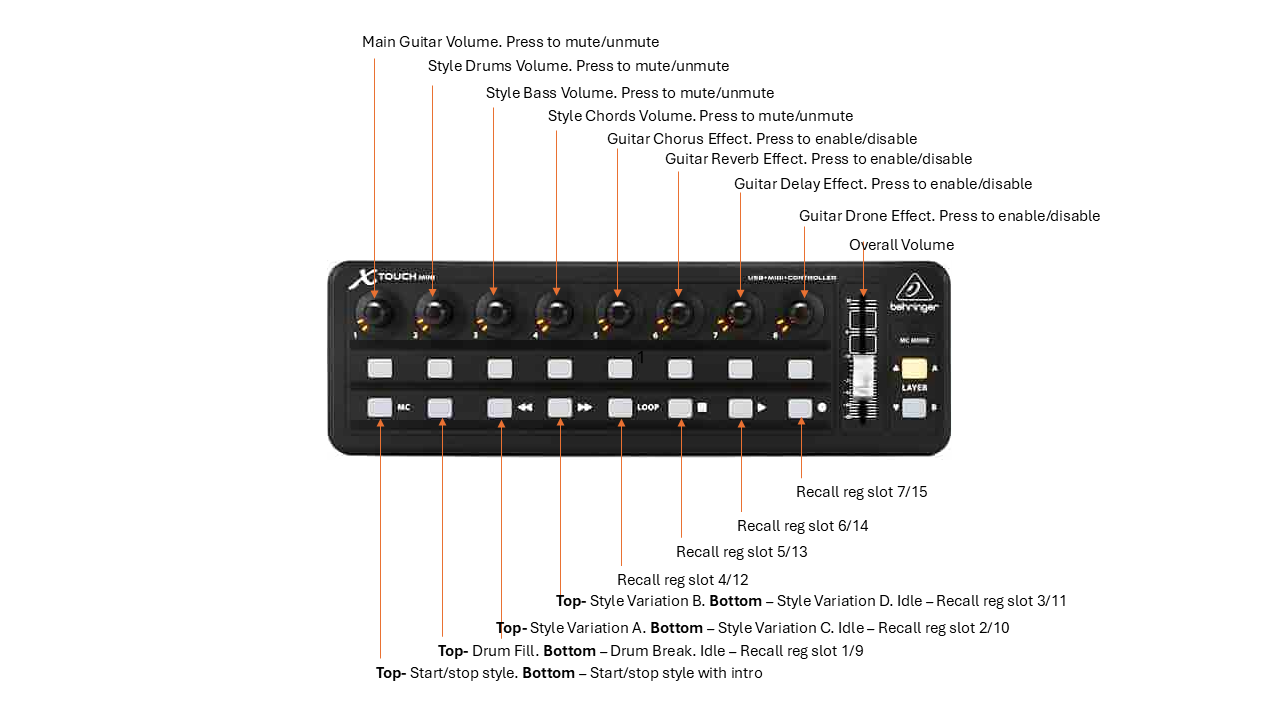
When Orin Ayo is idle and no style playing, the 16 buttons can be used to start/stop or recall application settings saved into slots (1-15).
While a style is playing, the buttons can be used to control the playing style by changing the style variations and adding drum fills or breaks.
The encoders can be pressed to mute musical instruments or rotated to change thier volumes.
M-VAVE Chocolate Wireless MIDI Controller
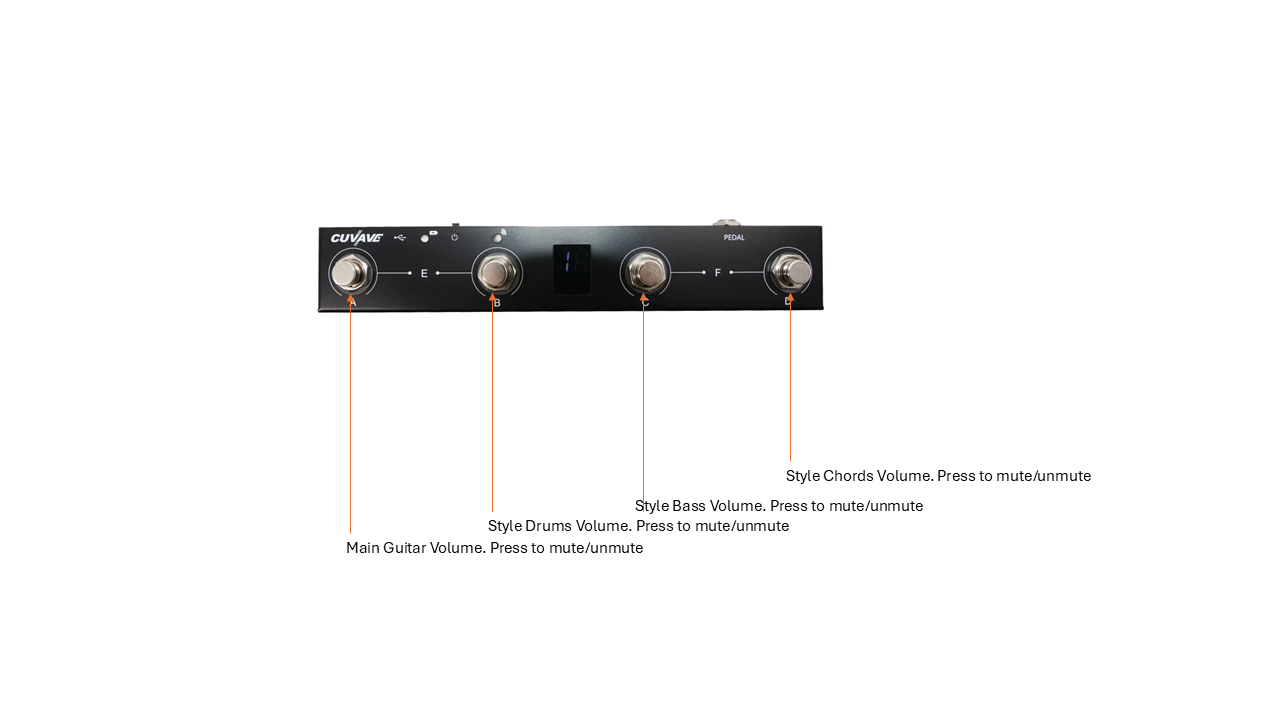
The wireleass M-VAVE foot-switch can be used by Orin Ayo to mute and umnute musical instruments while a style is playing.
Elegato StreamDeck USB Controller
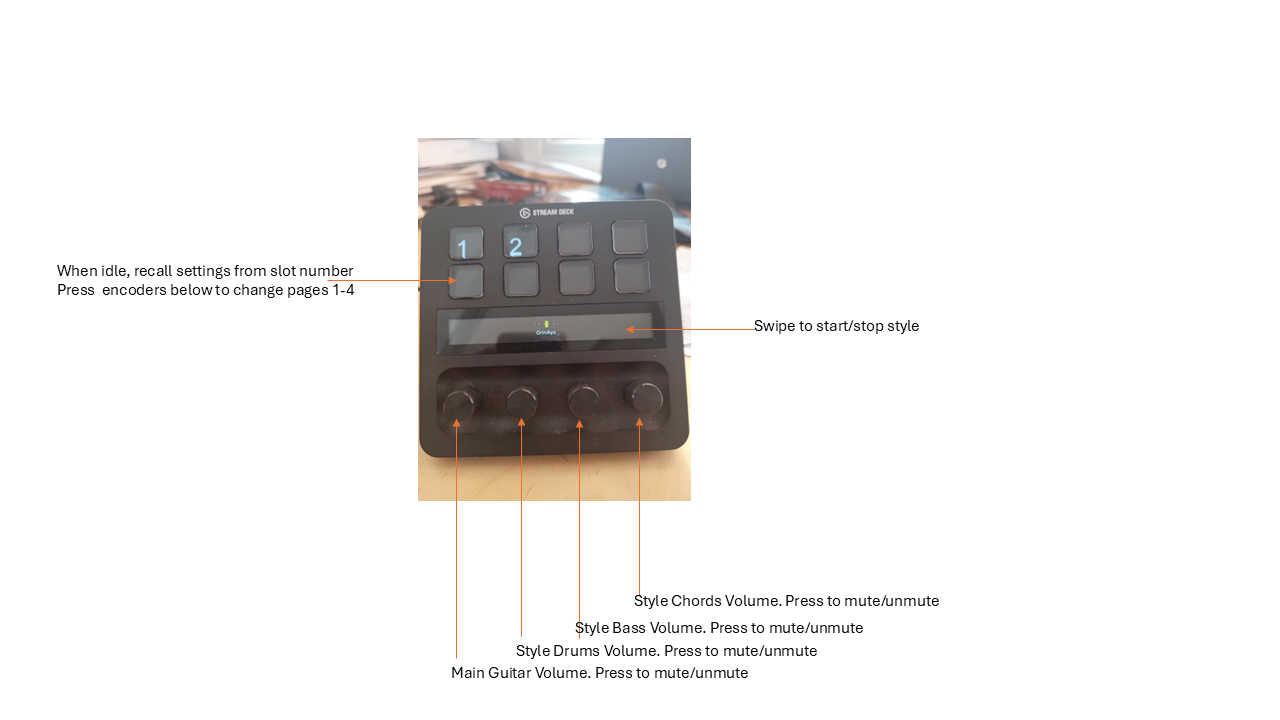
When Orin Ayo is idle and no style playing, the 8 buttons can be used to start/stop or recall application settings saved into slots (1-32). Use the encoders to change page numbers (1 -4).
While a style is playing, the buttons can be used to control the playing style by changing the style variations and adding drum fills or breaks.
The encoders can be pressed to mute musical instruments or rotated to change thier volumes.
Wireless Numeric Pads
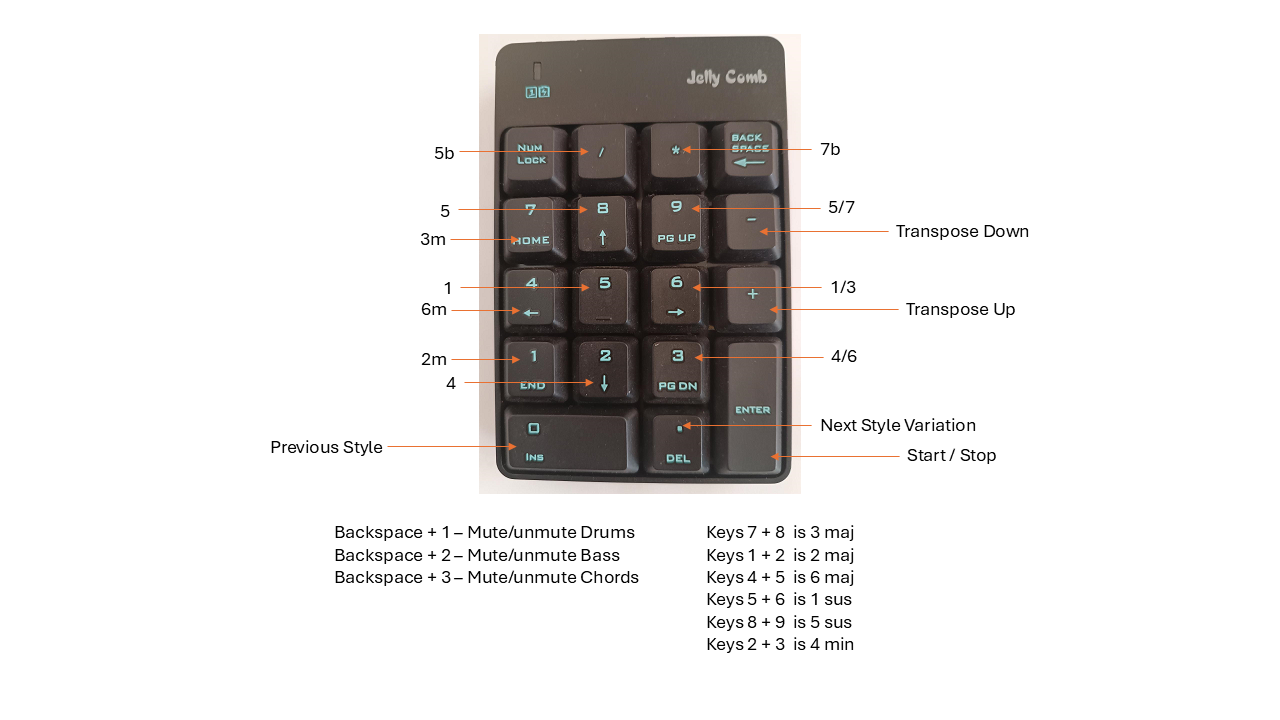
Orin ayo can be played live with a USB or Bluetooth numeric keypad. Any compatible wireless numeric keypad should work.
All basic chords are accessible with single key presses, while the advanced chords require two key key presses.
Styles can be started, stopped and varied. The song key signature can also be stepped up and down.